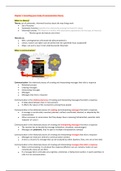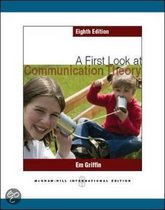College aantekeningen
Introduction to Communication Science (Vrije Universiteit Amsterdam, 2019/2020)
- Instelling
- Vrije Universiteit Amsterdam (VU)
- Introduction to Communication Science - Aantekeningen van de hoorcolleges (Nederlands) - Vrije Universiteit Amsterdam
[Meer zien]





